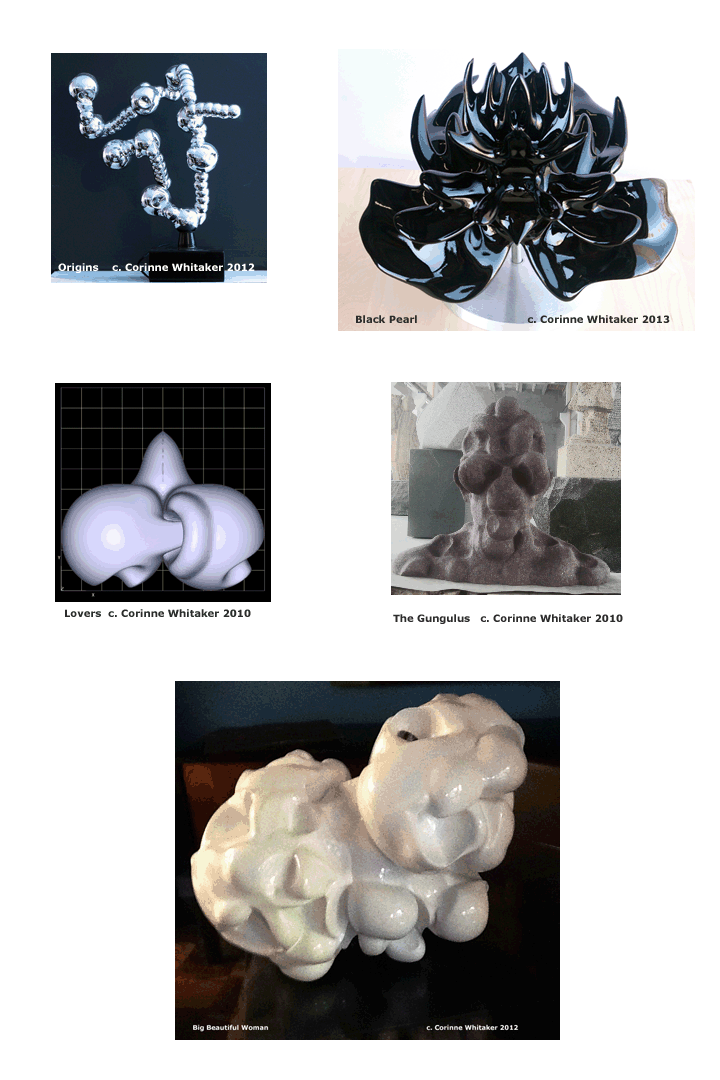

For those of you looking for a simple explanation of how rapid prototyping, or 3D printing, works, here is a brief description: 3D printing begins with an STL (Standard Tessellation Language) file composed in a CAD/CAM program (Computer Aided Design/Computer Aided Manufacturing). The STL file includes detailed data in the form of hundreds or thousands of polygons or facets. These polygons tell the 3D printing machine what to do.
In the past, the use of these programs has been daunting. They were very expensive, and they required understanding a complex language of 3D formation. In addition, companies were protective of their research landscape and each developed a vocabulary distinct to itself: one of my favorites doesn't even offer "file" or "edit". The result was a steep uphill learning curve. Expense of production also eliminated many artists from the process. Ordering 3D parts by the millions for Ford Motors, for example, could be cost efficient. Ordering one for an artist was prohibitive. Today there are expanding solutions to some of these problems and a consequent rise in the use of 3D printing. At the same time, there has been a significant increase in the types of polymers available to print. Some of them are so much lighter and more stable than the previous materials that they are finding their way into airplane manufacturing, for example.


front page , new paintings, new blobs, new sculpture, painting archives, blob archives, sculpture archives, photography archives, Archiblob archives, image of the month, blob of the month, electronic quill, electronic quill archives, eMusings, eMusings archive, whitaker on the web, nations one, meet the giraffe, studio map, just desserts, Site of the Month,
want to know more about the art?
about the artist?